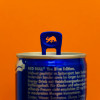How to grow human skin from stem cells has been discovered by UK scientists.
Although it's been possible to grow skin cells  in the laboratory dish for decades, pursuading the tissue to organise itself into an arrangement that faithfully recapitulates the structure of real skin has never been achieved.
in the laboratory dish for decades, pursuading the tissue to organise itself into an arrangement that faithfully recapitulates the structure of real skin has never been achieved.
This means it has been very difficult to use dish-based skin cultures to study skin disorders, like dermatitis, or drugs and cosmetics intended for skin application, like creams and make-up.
Now Anastasia Petrova and her colleagues, from Kings College London, have found a way to use stem cells to grow, in a petri-dish, skin closely resembling the multilayered, impermeable tissue that is a human's largest organ.
Using chenical signals and a culture chamber where the conditions were carefully controlled for oxygen and humidity, the team were able to fool both embryonic stem cells and so-called IPS cells (induced pluripotent stem cells, which are reprogrammed adult cells) into believing they were forming the outer layer of a developing embryo.
This triggered them to specialise into skin-producing stem cells that, in turn, produced layers of cells that, microscopically, biochemically, genetically and functionally resembled real skin.
"This 3D model," say the team, "has the potential to be easily scaled up and adapted to 'good medical practice' requirements for use in regenerative and aesthetic medicine, as well as drug development."










Comments
Add a comment